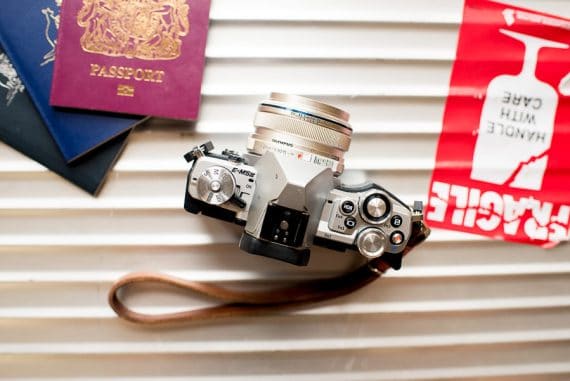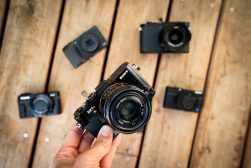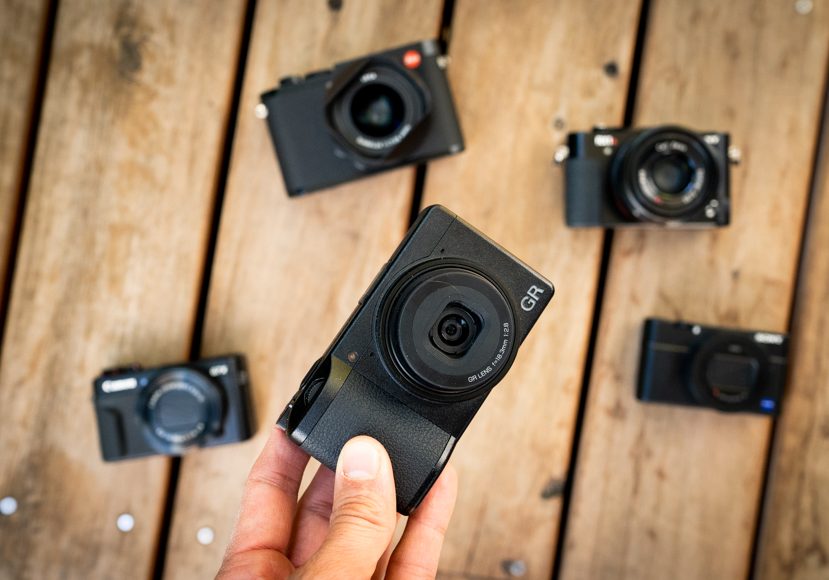
Top 6 Alternatives to the Ricoh GR III in 2024
Having a hard time getting your hands on a Ricoh GR III? These six alternatives that offer similar or better features and performance for your money.
Shotkit may earn a commission on affiliate links. Learn more.
Here’s our guide to the best Ricoh GR III alternatives for anyone who’s struggling to get hold of one.
For various reasons (discussed below), this pocket-sized digital camera is in high demand and low supply right now.
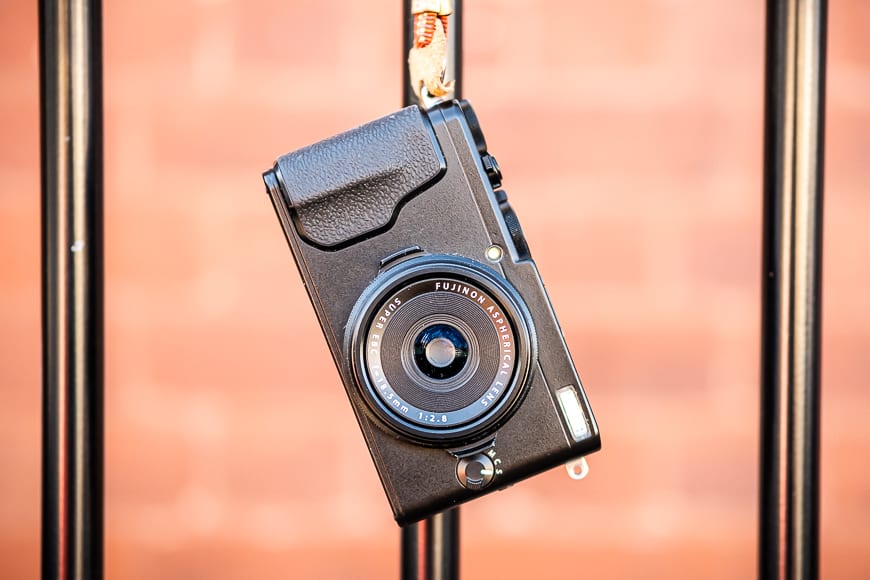
Pocketable like the Ricoh GR III with similar image quality and autofocus performance, plus the addition of tilting touch screen and film simulations.
I tested a GR III loaner for our best compact cameras article and thoroughly enjoyed it – I should have asked Ricoh if I could keep it!
Thankfully, there are some similar cameras to the Ricoh GR III, and we’ve included them on this list for you.
Let’s take a quick look at the criteria for cameras that can replace the GR III and then dive into the recommendations.
What features should an alternative to the Ricoh GR III have?
- Compact Design: Easily pocketable for on-the-go photography.
- APS-C or Larger Sensor: Ensuring high-quality images in various lighting conditions.
- Sharp Fixed Lens: Preferably around the 28mm to 35mm equivalent range.
- Responsive Autofocus: Quick and accurate for capturing spontaneous moments.
- Unique Image Rendering: Distinctive color profiles or processing options.
- Manual Control Options: Dials or buttons for intuitive adjustments.
- Touchscreen Interface: For easy navigation and image review.
- Wireless Connectivity: Wi-Fi and/or Bluetooth for seamless image transfer.
- Stabilization System: To reduce camera shake and ensure sharp images.
- Durable Build: Weather resistance or robust construction for varied environments.
What is the Best Ricoh GR III Alternative in 2024?
Fujifilm X70

Credit: Greg Cromie
- Touch-enabled screen
- Excellent lens
- Great image quality
- Good dynamic range
- Can be difficult to get a good grip due to its size
- Flimsy battery door
- RAW files are not DNG
The Fujifilm X70 is a pocket-sized alternative to the Ricoh GR III with an 18-megapixel APS-C sensor.
Its image quality is great, with clean, organic files, plus great film simulations, just like all the best Fujifilm cameras.
Despite the sensor’s size, the images are still good quality when you crop in.
The dynamic range is excellent for a camera of this size and specs.

The Fujifilm X70 is small but solid and feels comfortable in your hand | Greg Cromie
It also has pretty good autofocus and a nice articulating screen for vlogging, which boasts touch-to-focus and touch-to-shoot functions.
It has a great, sharp lens, which is 18mm with an aperture of f/2.8.
The fixed lens acts like a 28mm on a full-frame camera, so it’s an excellent all-around focal length that can also produce a nice, creamy depth of field with clean bokeh (although you have to get close due to the focal length).
Olympus E-PL7
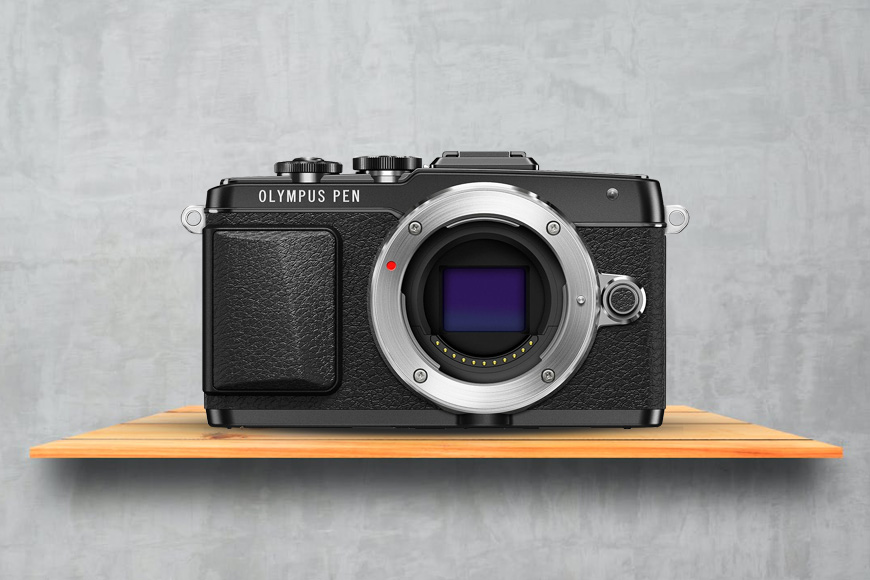
- Well-built
- Good battery life
- Image stabilisation
- Outstanding autofocus
- Confusing main menu
This Ricoh GR Iii alternative, the Olympus E-PL7, has a 16-megapixel CMOS sensor with an ISO range of 200 to 25600.
It’s very easy to use in automatic mode but also has all the manual controls you’d want from a camera.
It has an articulating screen that can flip all the way down to help you take selfies or vlog.
The screen’s image is sharp and clear, and it’s also touch-enabled, so you can use it to set your focus and also take your shots.
Image quality is good, with spot-on exposure and good colours, and you can shoot RAW files.
There’s also image stabilisation, helping you get sharp images in low light.
It records video in Full-HD up to 40fps, and you are also able to use full manual control when filming.
One of its outstanding features is its autofocus. This is excellent, fast, reliable, and of a level you’d find in entry-level DSLRs.
Along with the standard autofocus setting, you also get eye and face intelligent autofocus.
The main menu is quite packed and difficult to navigate, but the Quick Menu is very well laid out and contains everything you’ll need for most shooting situations.
And, although there’s no built-in flash, you do get a small external one that can be connected to the hot shoe.
Canon PowerShot G5 X
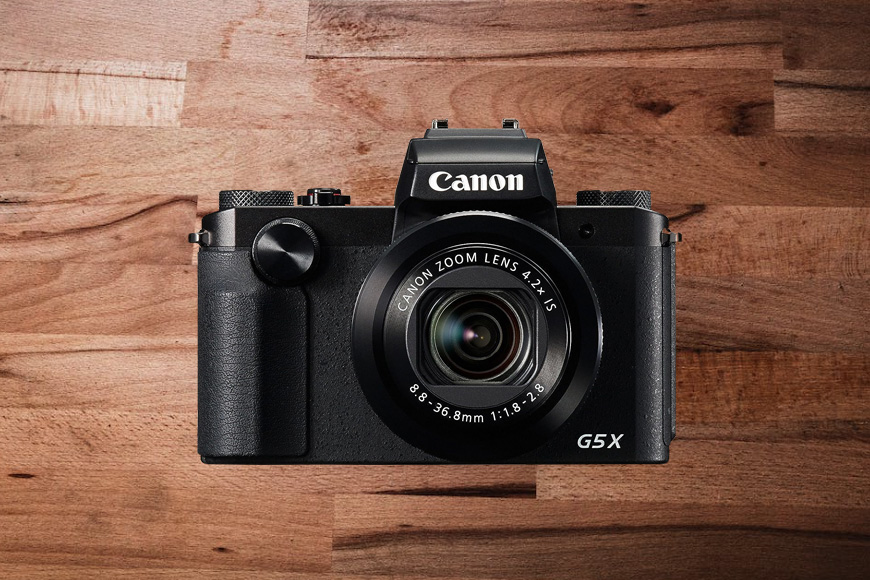
- Robust
- Well-designed
- Customizable dials
- Excellent lens
- Great image quality
- None
The Canon PowerShot G5 X is a well-built, solid kind of camera. Its metal construction gives it a nice feel in the hands, and despite its compact size, it has a good, deep grip, which is even suitable for bigger hands.
It has 1 1-inch, 20-megapixel sensor and shoots RAW and Full-HD video, all with those great Canon colour profiles, which mean everything looks great straight out of the camera.
The G5 X has a range of customizable dials, so you can set it up perfectly for how you like to shoot.
It has a 3-inch side-articulating screen, but also has a viewfinder, which is essential for composing images in bright conditions.
The lens is a 24mm to 100mm full-frame equivalent, which is a nice, versatile focal range, especially for a compact camera.
And with its variable aperture from f/1.8 to f/2.8, you’ll be comfortable in in low light, whether shooting wide or fully zoomed.
Panasonic Lumix DMC-LX100
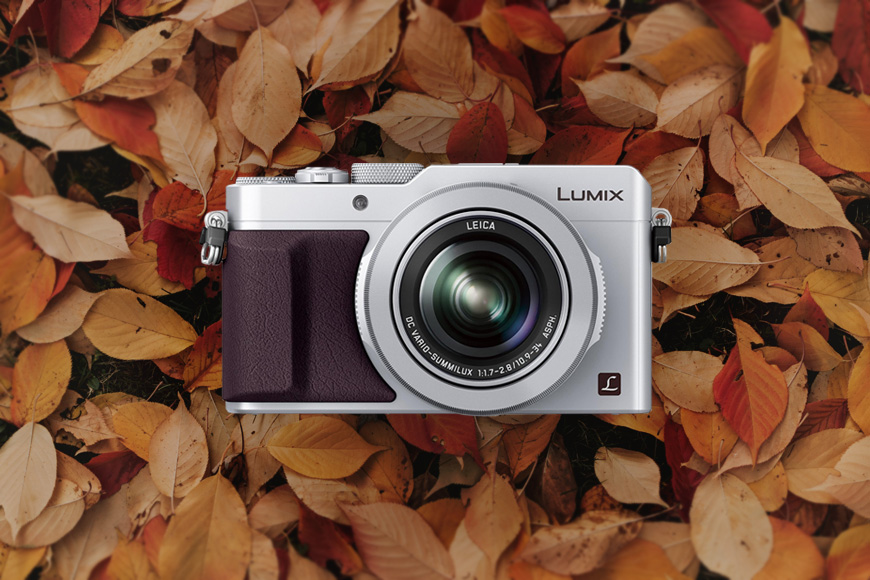
- Easy to use
- Good lens
- Great autofocus
- Aspect ratio selector
- Not the best dynamic range
- Video quality is not great
This is a classic-looking compact camera, which is small enough to carry around on daily shoots.
It doesn’t have an articulating screen, but it does have a 3-inch LCD touchscreen and an electronic viewfinder.
It has a micro four-thirds sensor, can shoot still in bursts of 11fps, and also 4K footage, although this is not the best quality – photography is where this camera shines.
It’s very easy and fun to use and great for shooting either in automatic mode or when taking more manual control.
The lens has an aperture ring on it, and it’s sharp and fast. It’s a 24-70mm full-frame equivalent, with an aperture range of f/1.7 to f/2.8. This gives you excellent low-light performance across the range and pretty good capabilities for playing with shallow depth of field.
It has excellent, responsive autofocus that works quickly and quietly.
One interesting feature is its aspect ratio selector, which is built into the lens. With it, you can choose between the formats 4:3, 3:2, 16:9, or 1:1.
The camera doesn’t crop to make these ratios, it uses different parts of the sensor, so you get the highest possible resolution with each.
Having these different ratios to play with can really help you out creatively in the kinds of shooting situations these compact cameras are made for.
Sony Cyber-Shot RX100 VII

- Tilt screen
- Good image quality
- Excellent autofocus
- Shoots 4K
- Slippery – need to buy an extra grip
The Sony Cyber-Shot RX100 VII is based around a 20-megapixel 1-inch sensor
It provides excellent image quality and sharp pictures, with great colours and good detail.
The video quality is decent too. It shoots Full-HD (30-minute clips) and 4K (clips limited to 5 minutes to prevent overheating).
Also, a bonus for videographers is that it has a mic jack, so you can record external audio.
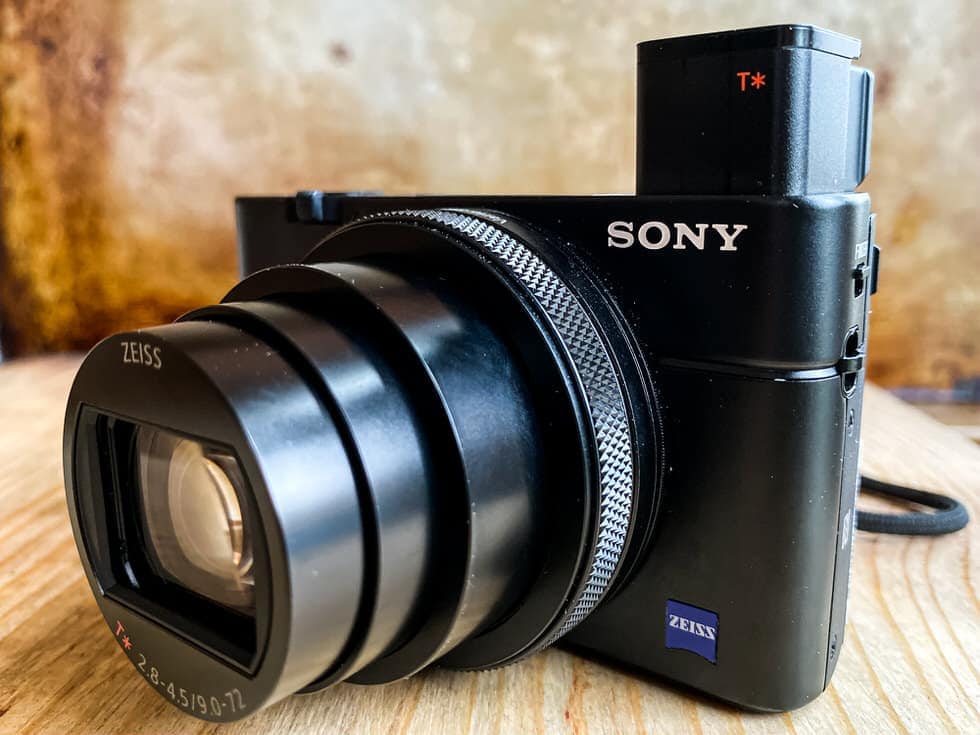
An extending zoom lens is something the GRIII doesn’t offer | Daniel Stark
It has a 24mm to 200mm full-frame equivalent lens, and this includes a customizable control ring that can be set up, for example, for ISO, shutter, or aperture – whatever you need.
It has a flip-up tilt screen, which is ideal for filming vlogs or taking selfies. And there’s also a pop-up viewfinder, which is a great alternative for when you’re shooting in bright light.
The RX100 VII has phenomenal autofocus, which is similar in quality to the top-of-the-range Sonys.
Fujifilm X100 V
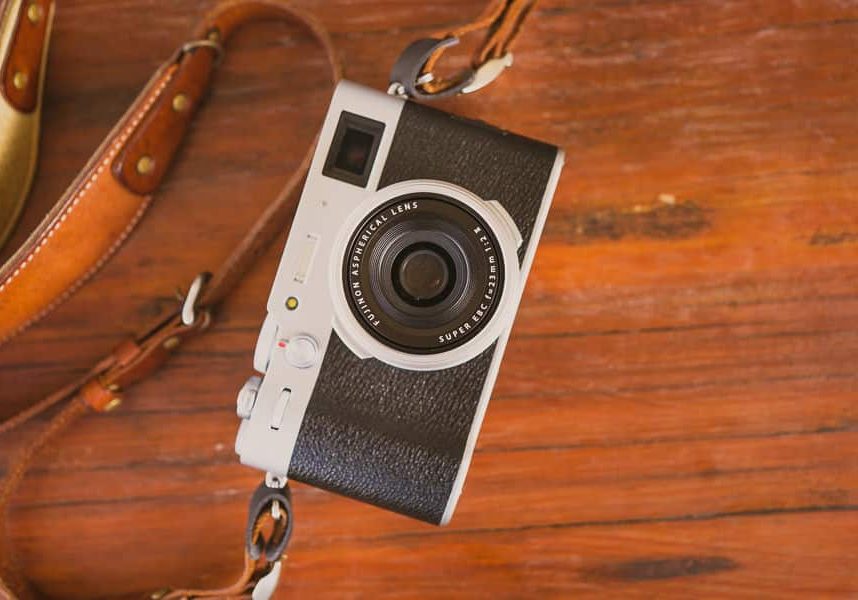
- Excellent image quality
- The lens is high-quality and sharp
- Great autofocus capabilities
- Has a tilt-screen
- Weather-resistant
- Not everyone will like the hybrid viewfinder
- Hard to find in stock
- Bulkier than the Ricoh GR III
The Fujifilm X100V is an excellent alternative to the Ricoh GR II, but you may have trouble finding it in stock.
Its design is based on the old rangefinder camera bodies and is drop-dead gorgeous – hence its popularity.
It’s small, minimalist, and sleek, with manual control dials – for shutter speed, ISO, and exposure compensation – that blend into the overall form factor.
The X100 series has always been our choice of the best retro-styled digital camera.
It has a 23mm lens(35mm full-frame equivalent), which is a good all-round focal length and point-of-view.
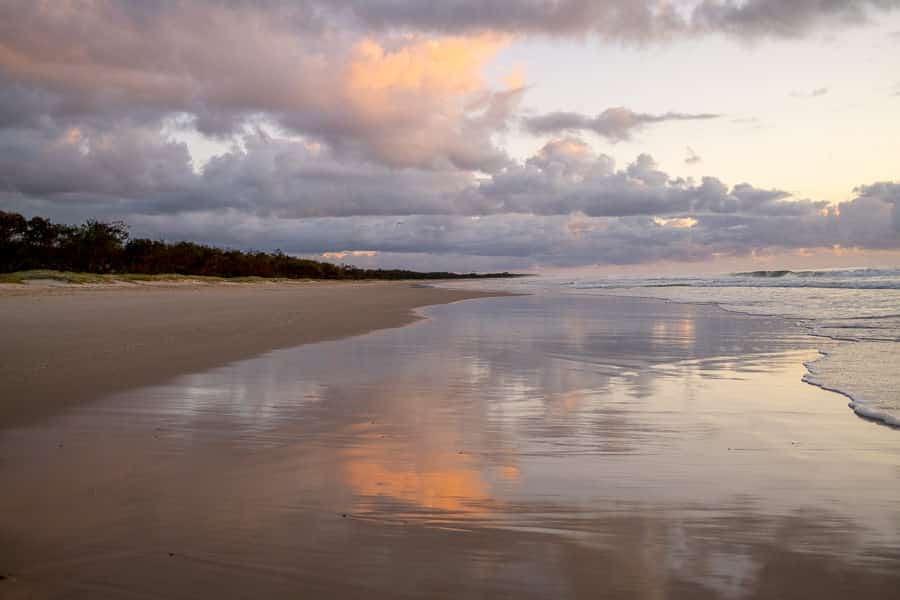
When a straight-out-of-camera JPEG has colours this nice, there’s no need to shoot and edit RAWs anymore | Fujifilm X100V sample image
Of course, the lens incorporates Fuji’s much-loved aperture ring, and it’s a fast lens with an aperture of f/2, which is great both for shooting in low light and getting a shallow depth of field.
The lens offers great contrast and colours, too, and is razor-sharp.
The Fuji X100V also has a unique feature, which is its hybrid optical (OVF) and electronic (EVF) viewfinder.
With this, you can switch between the two kinds of viewfinder for vastly different shooting experiences.
The OVF allows you to have the old-school feel of shooting directly through the viewfinder, while the EVF, in the same way that modern DSLR or mirrorless cameras do, shows you a preview of what you’ll actually get.
Why is the Ricoh GR III So Popular Right Now?
The Ricoh GR III has been especially popular as a camera for street photography for several reasons:
- Compact Size: The Ricoh GR III is a pocketable camera, making it easy to carry around. Its compactness is a significant advantage for street photographers and those who prefer a lightweight setup.
- Image Quality: Despite its small size, the GR III boasts a large APS-C sensor, which is typically found in much larger DSLRs. This sensor size allows for excellent image quality, especially in low-light conditions.
- Sharp Lens: The camera comes with a fixed 28mm equivalent f/2.8 lens, which is sharp and provides a versatile field of view suitable for a variety of photography genres, especially street photography.
- Snap Focus: One of the standout features of the GR series is the snap focus mode, which allows photographers to pre-set a focus distance. This is particularly useful for street photography, where quick shots are often necessary.
- Build Quality: The GR III has a solid build quality, feeling robust in the hand despite its compact size.
- Unique Aesthetic: The GR series has a cult following, in part because of the unique look and feel of the images it produces. The color rendition, contrast, and sharpness are often praised.
- Regular Updates: Ricoh has been consistent in updating the GR series, listening to feedback from its user base, and making improvements with each iteration.
- Price Point: While not the cheapest compact camera on the market, the GR III offers a lot of value for its price, especially when considering the image quality and features it offers.
- Community: The Ricoh GR series has a dedicated and passionate community of users. This community often shares tips, images, and experiences, which can be appealing to new users.
Frequently Asked Questions about Ricoh GR digital cameras
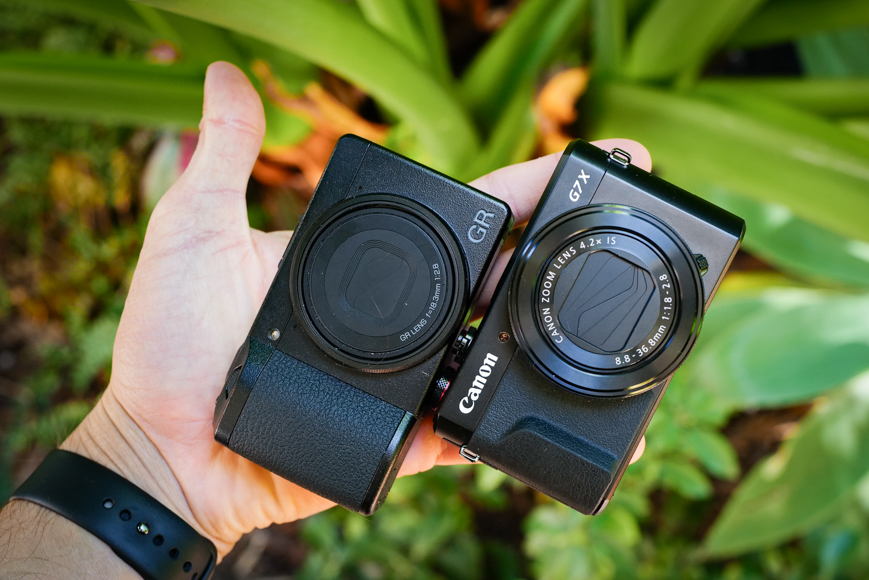
What is the difference between GR III and GR III Diary Edition?
As they both have exactly the same specifications, the differences are all cosmetic.
Instead of being all black, it has a warm, metallic grey finish and a dark brown rubber grip.
It also has a brown leather hand strap and a matching bleached sailcloth case.
Other than that, the diary edition debuted one new preset inspired by colour negative film.
What is the difference between GR II and GR III ?
There are quite a few differences between the two cameras, but here I’ll just highlight the main ones.
The GR III is slightly smaller and more pocketable than the GR II.
The GR III has a higher resolution sensor, 24.2 megapixels, compared with the GR II’s 16.2 megapixels. It also has an extended ISO range.
The GR III shoots 14-bit RAW, whereas the GR II shoots 12-bit RAW.
The newer model features improved autofocus capabilities plus in-built image stabilisation. The GR II had no IS.
The GR III does away with the pop-up flash of the GR II, instead opting for a hot shoe for external flashes. The GR III’s touchscreen is touch-enabled, but that was not the case with its predecessor.
Is Ricoh GR III full frame?
The Ricoh GR III is not a full-frame camera.
It has an APS-C sensor, which is a smaller sensor size, bigger than a micro four-thirds, but smaller than a full-frame sensor.
When did the Ricoh GR III come out?
The Ricoh GR III was released in 2018.

Pocketable like the Ricoh GR III with similar image quality and autofocus performance, plus the addition of tilting touch screen and film simulations.







